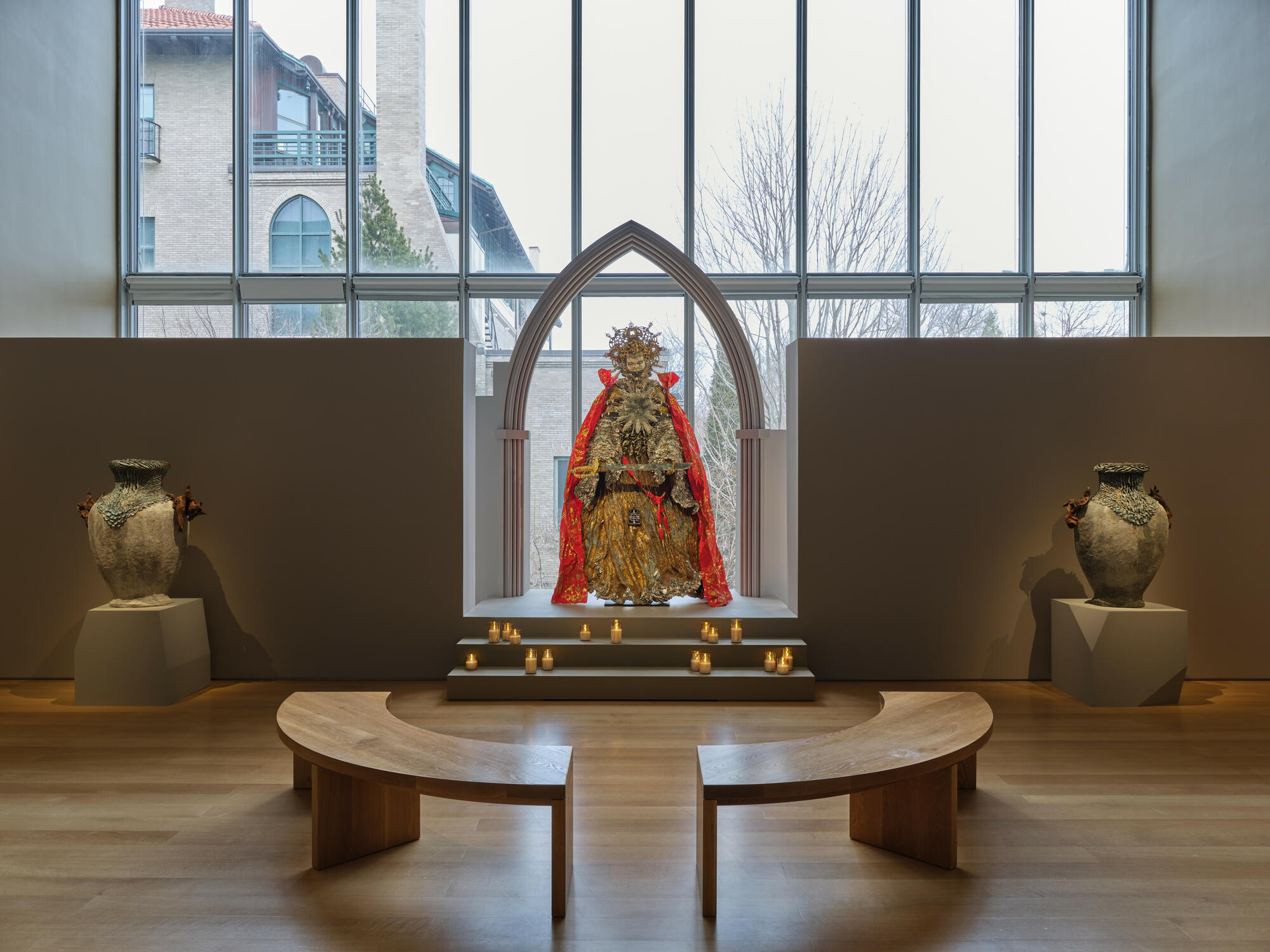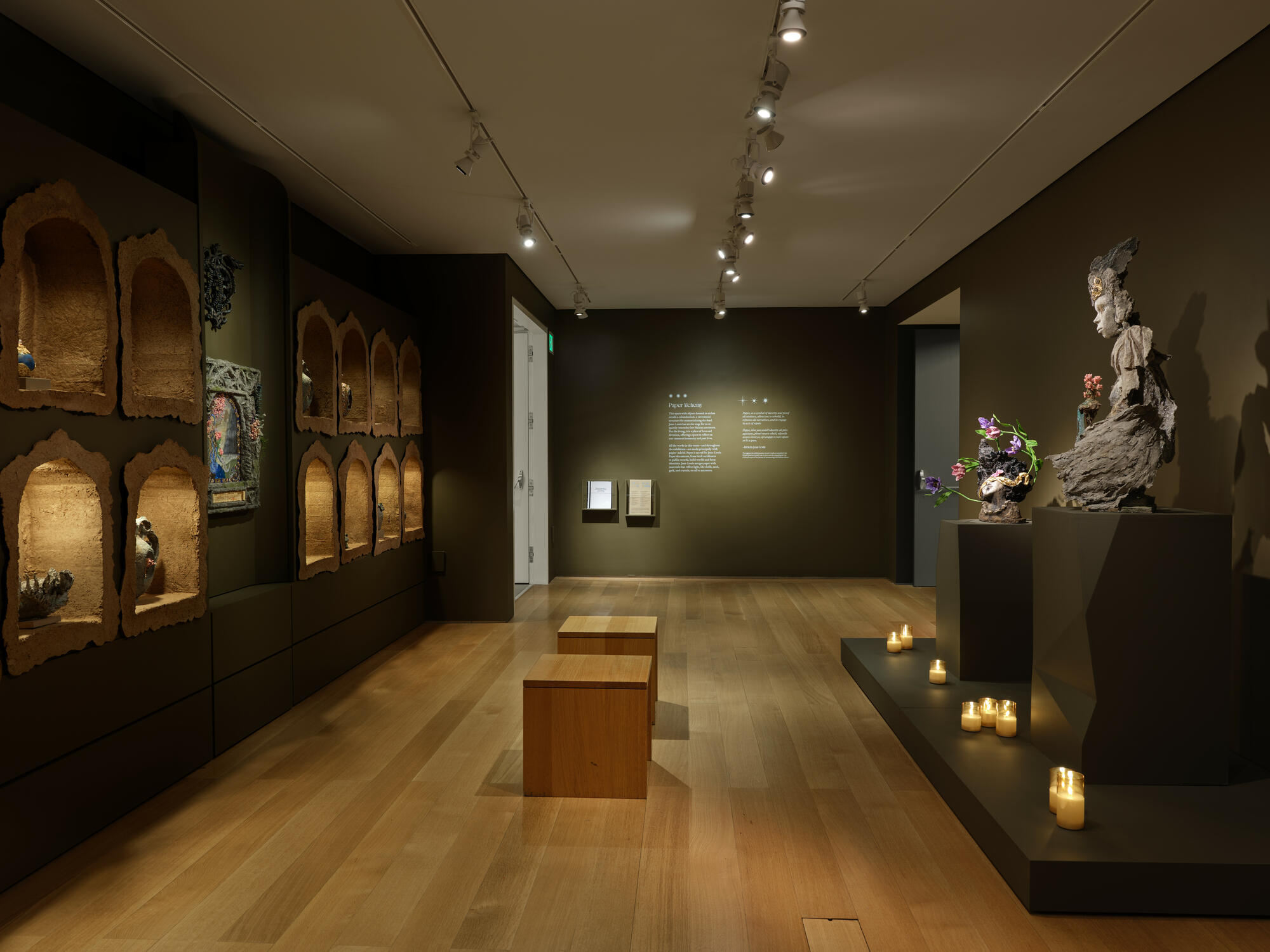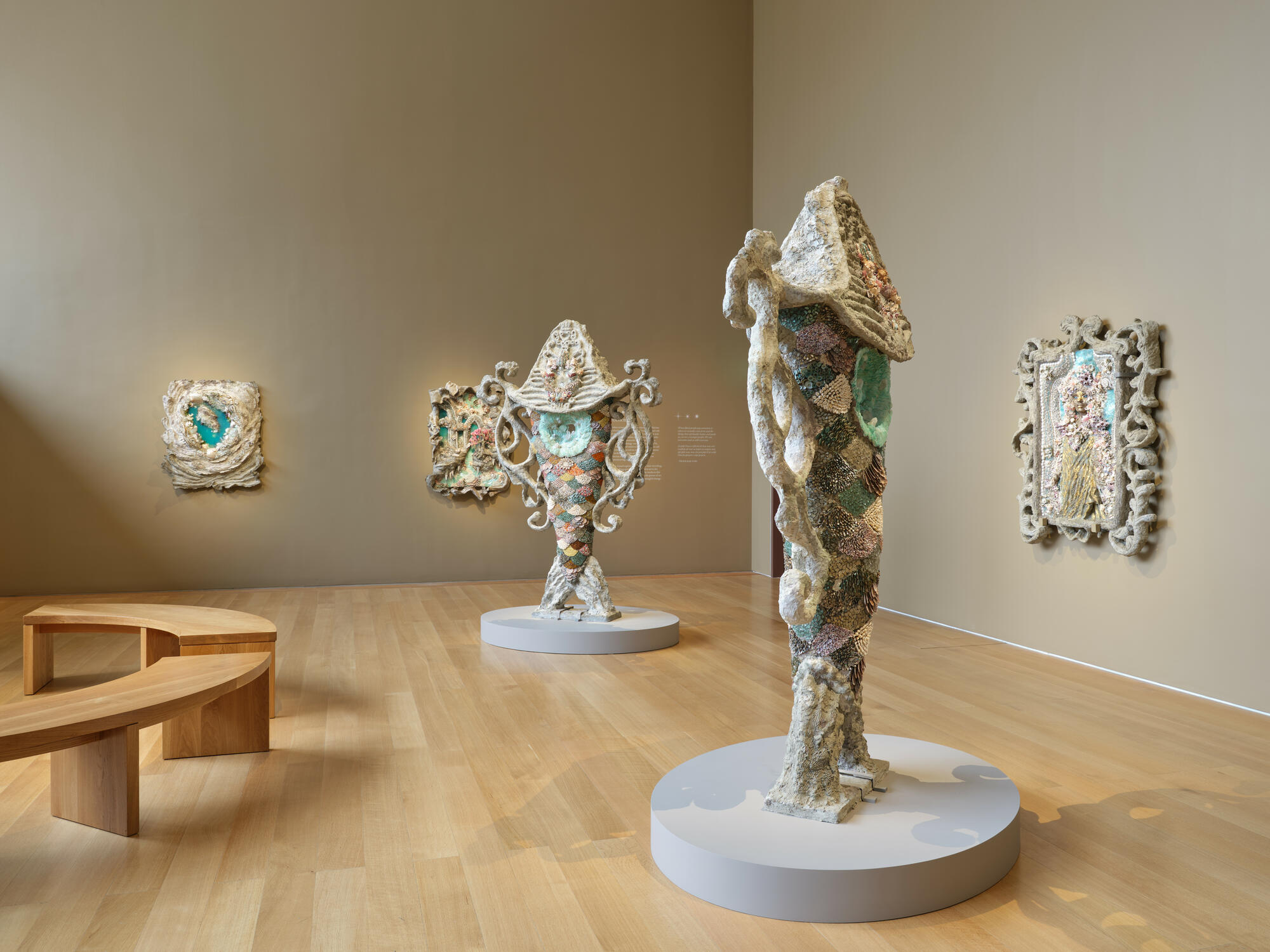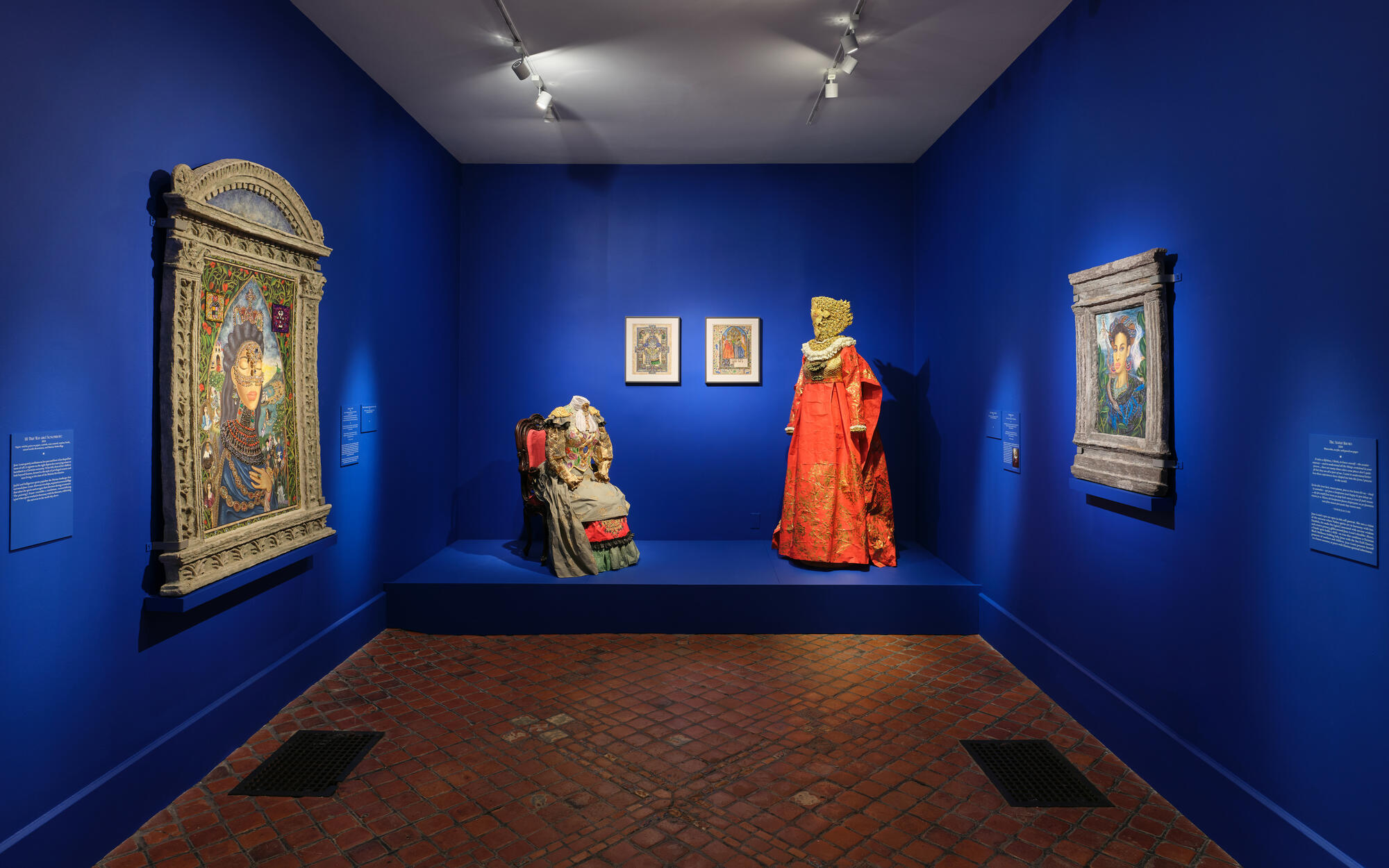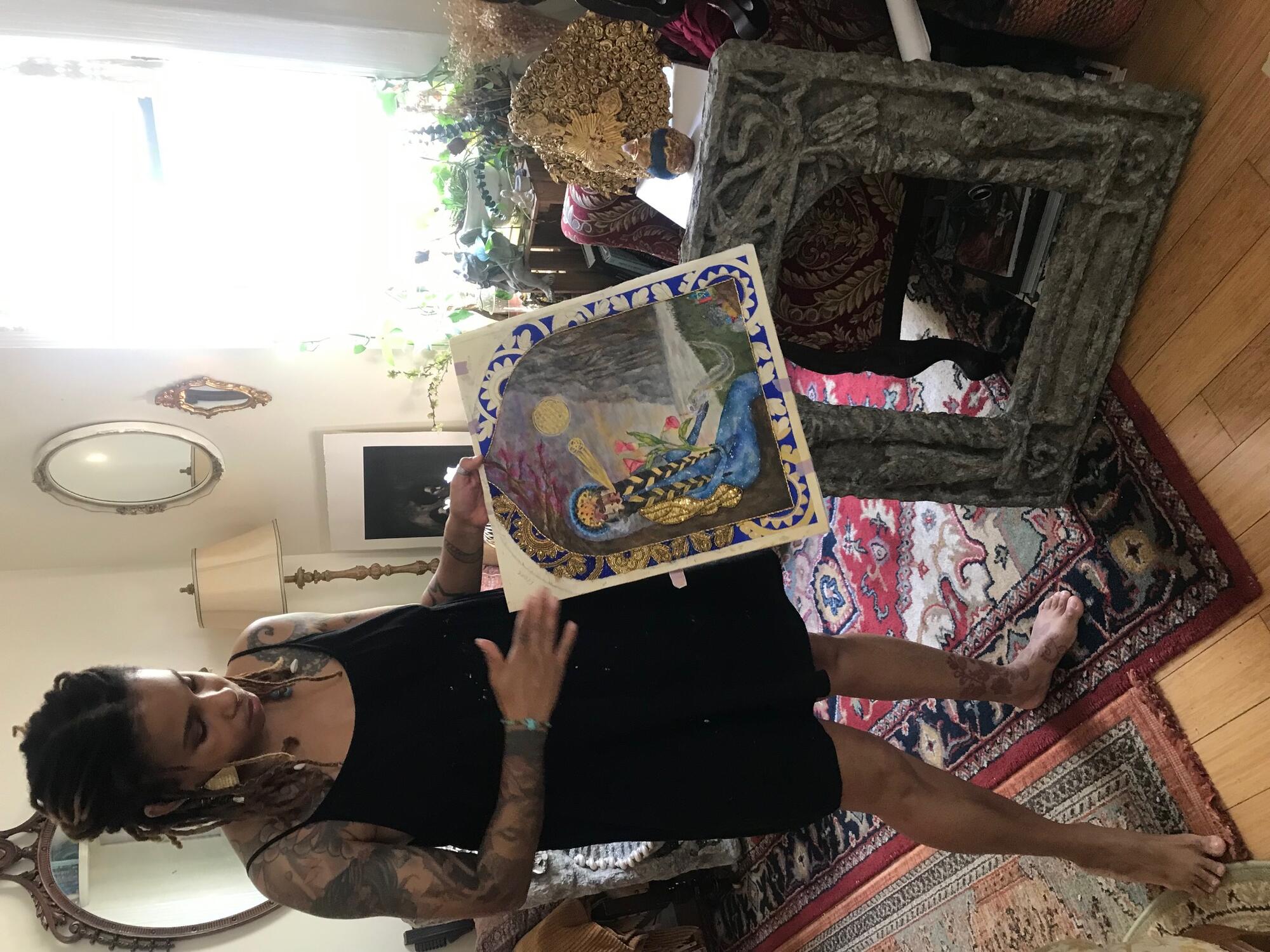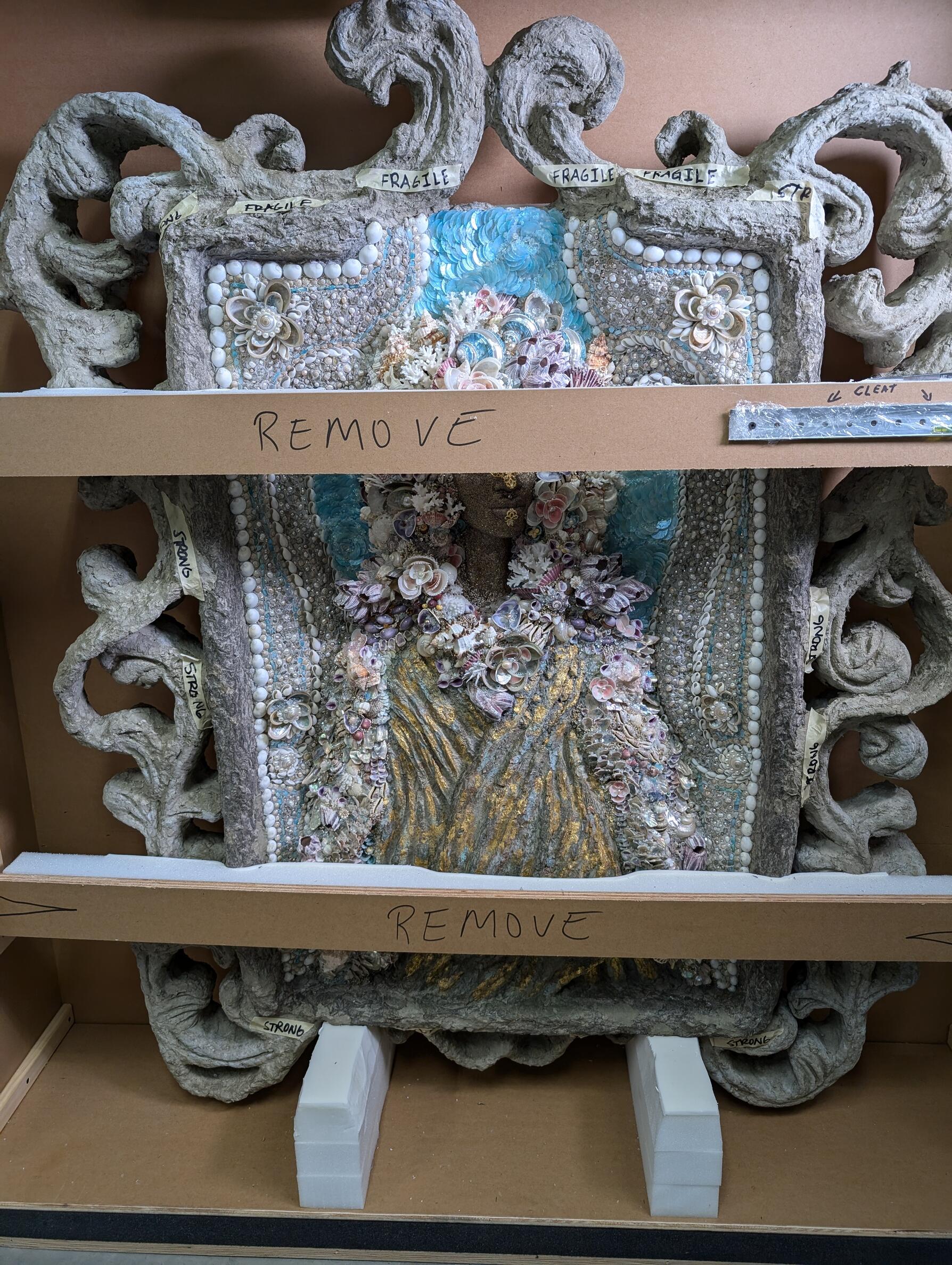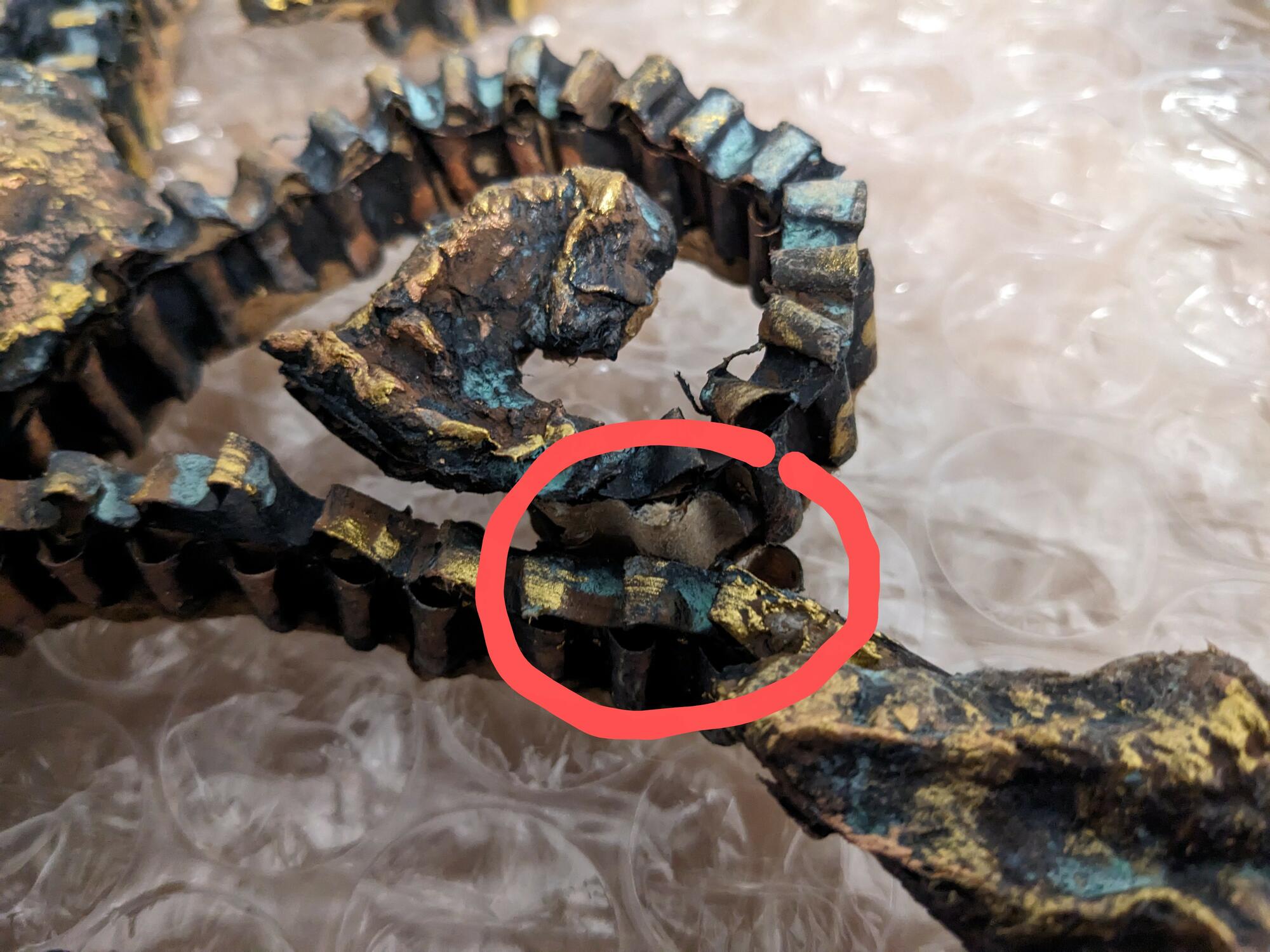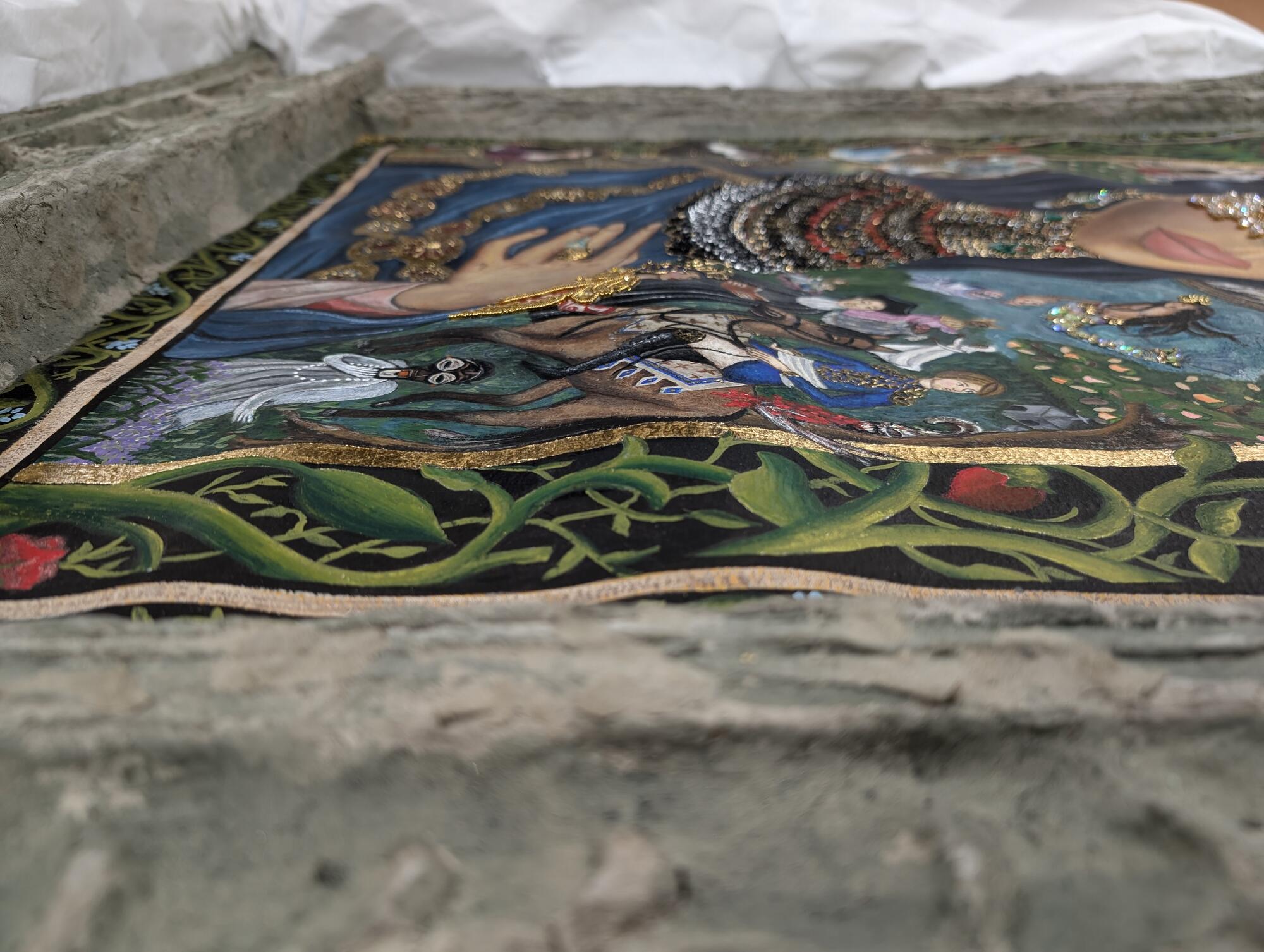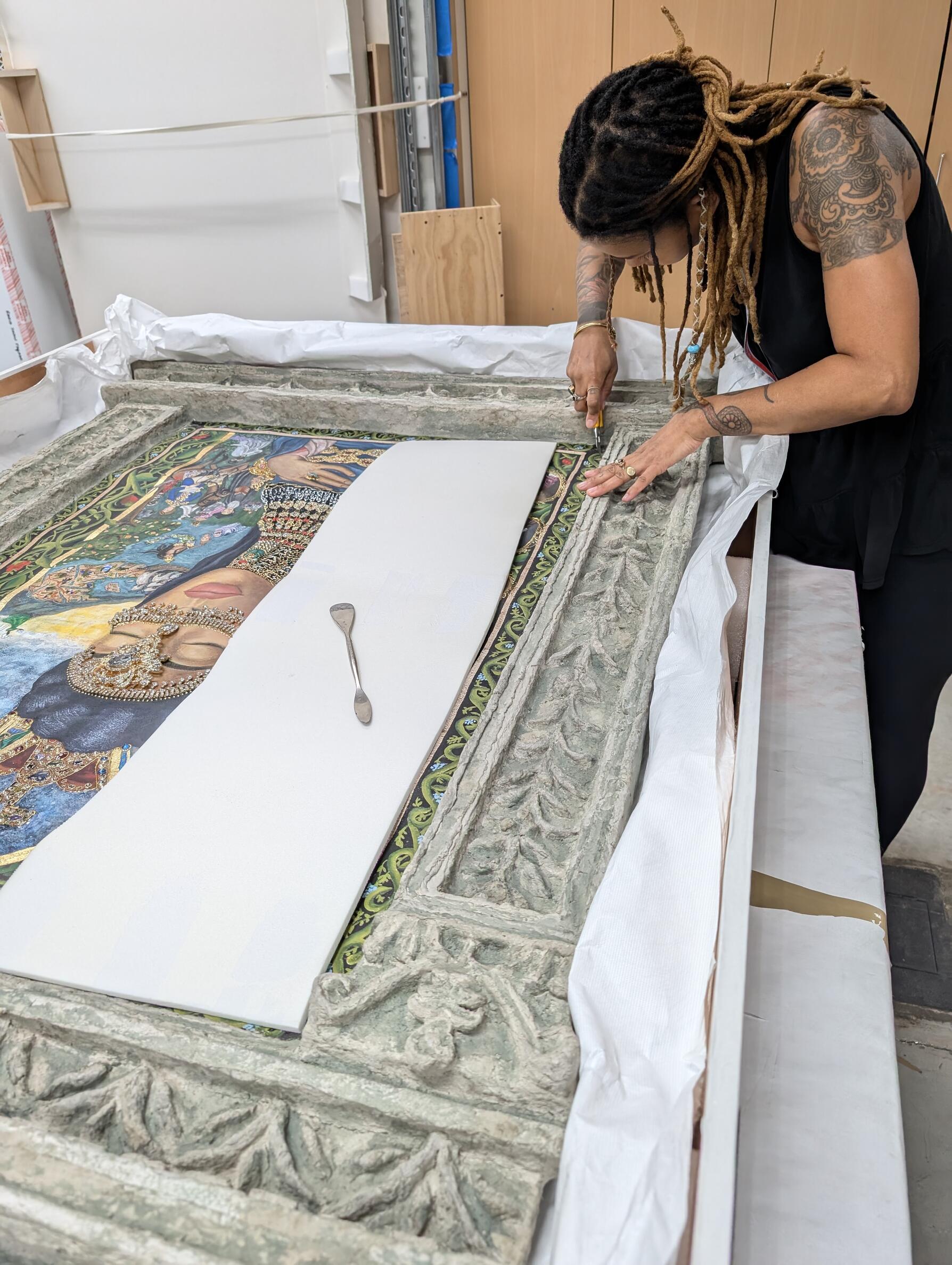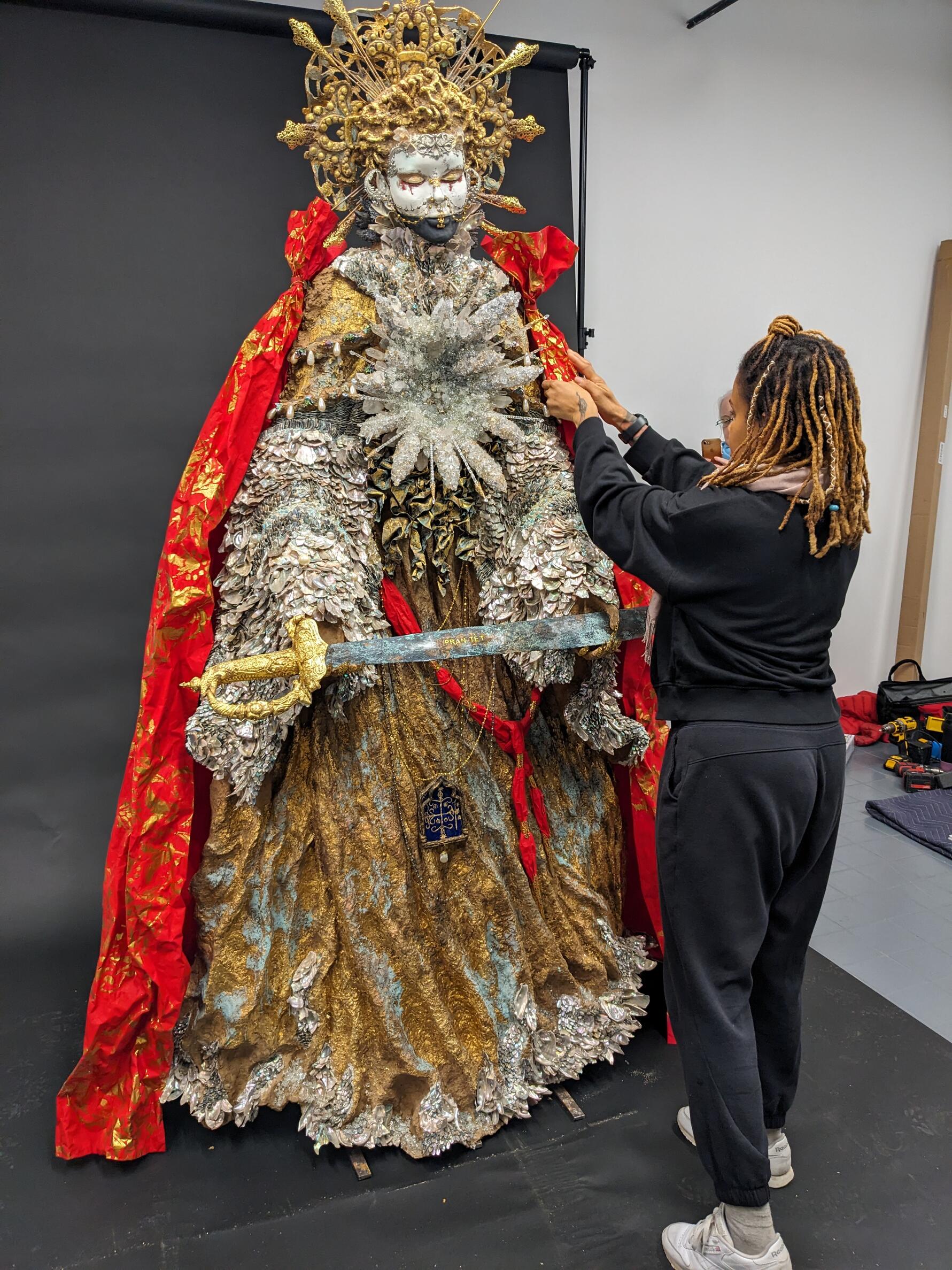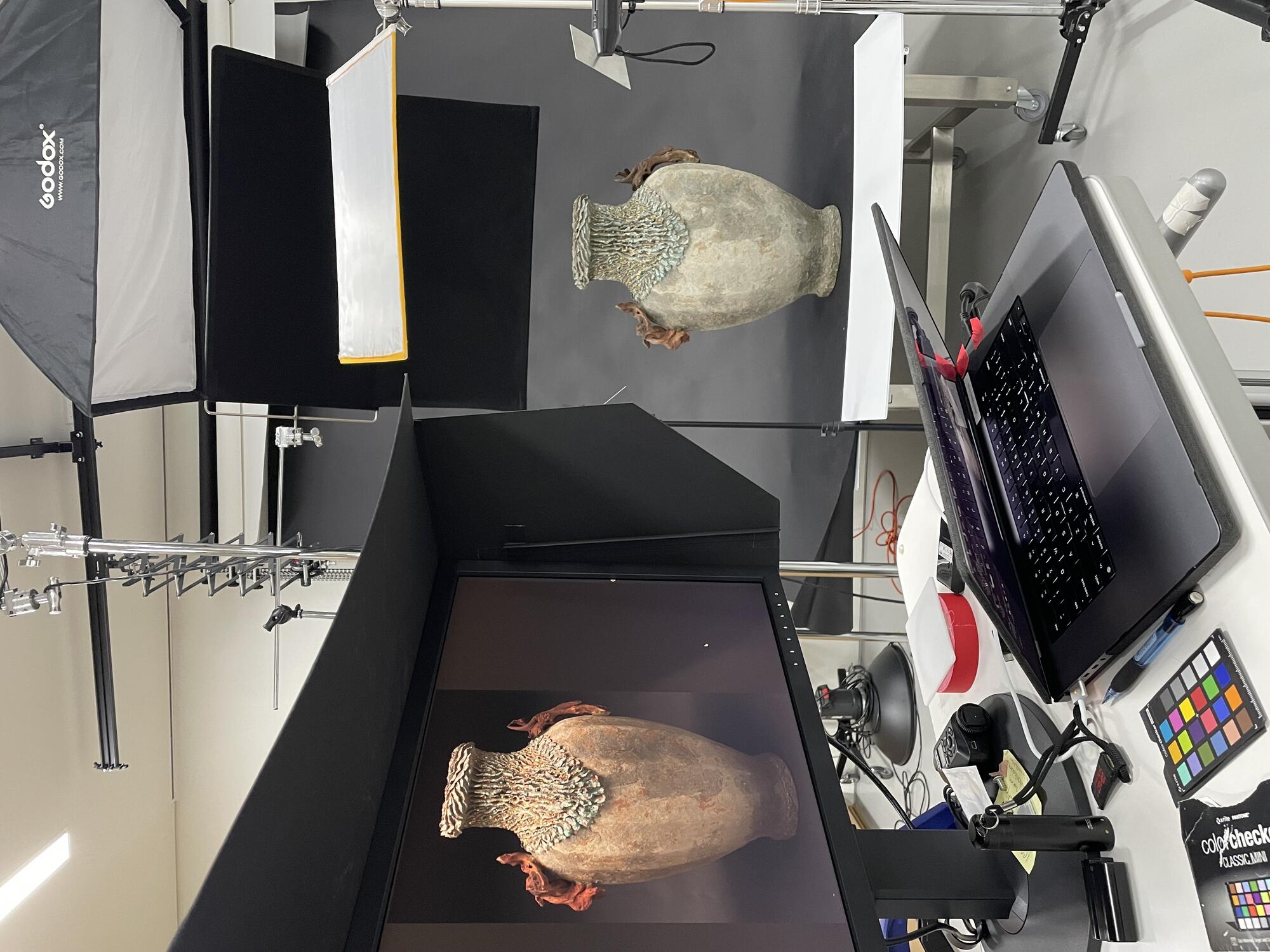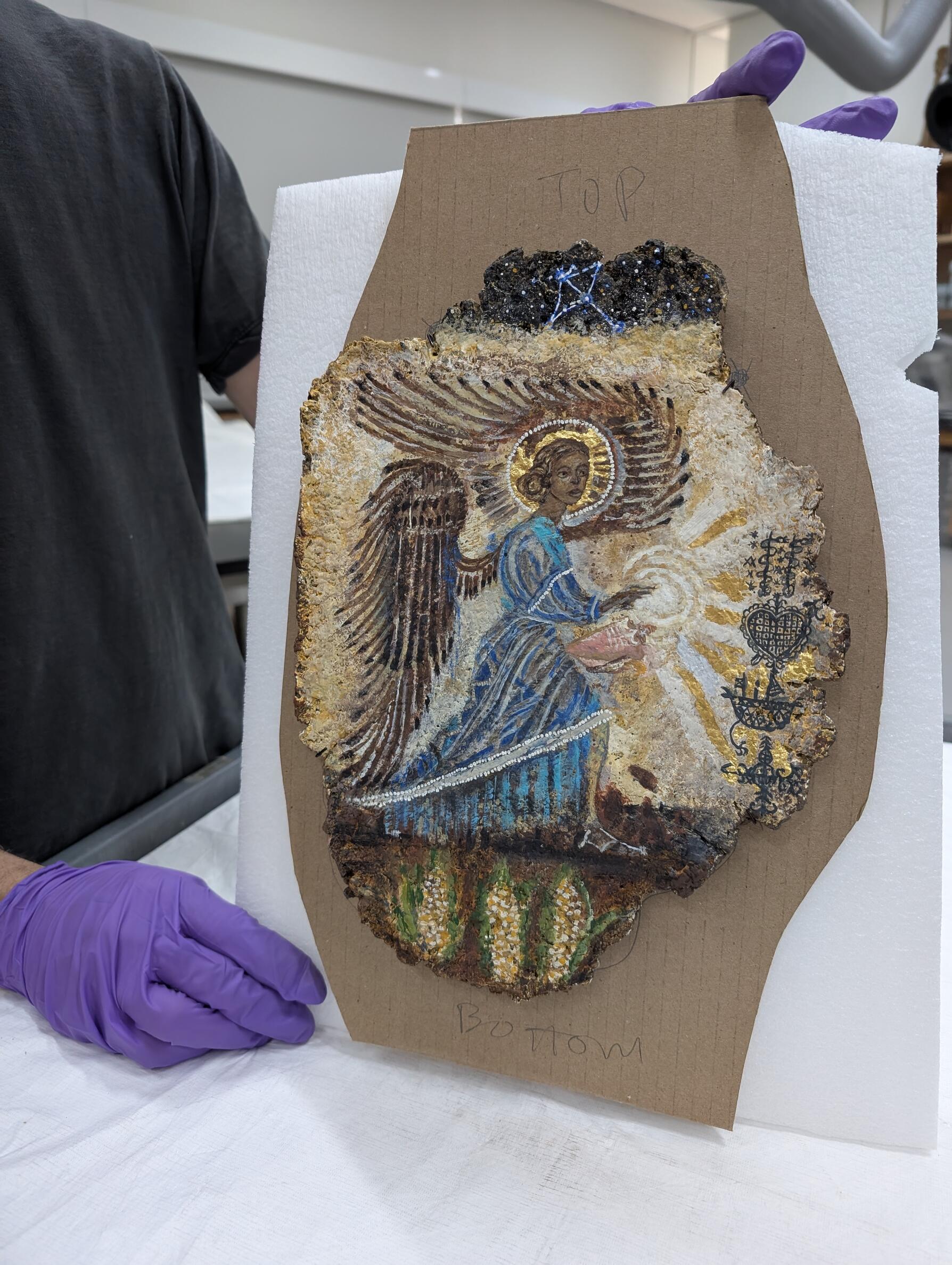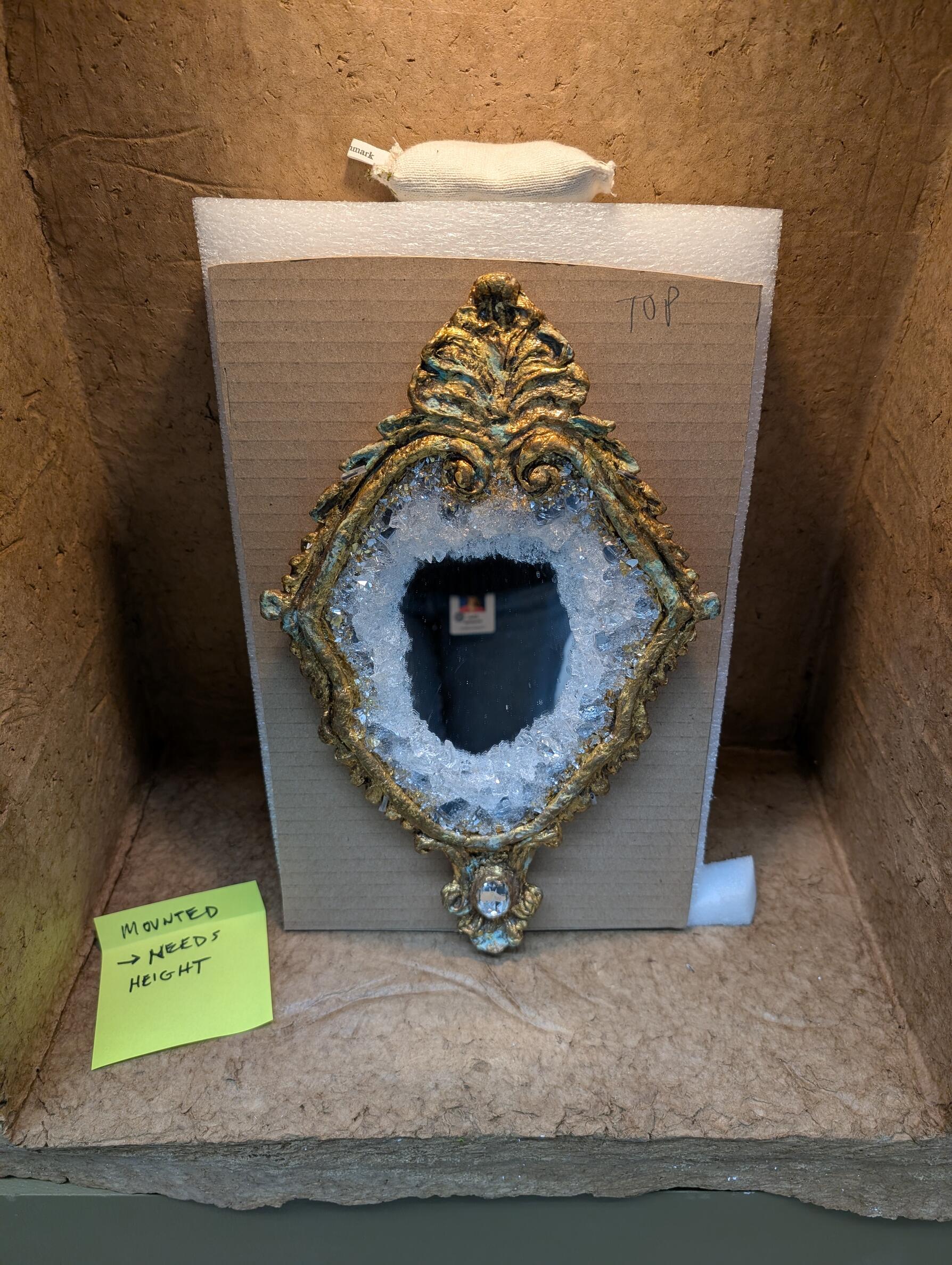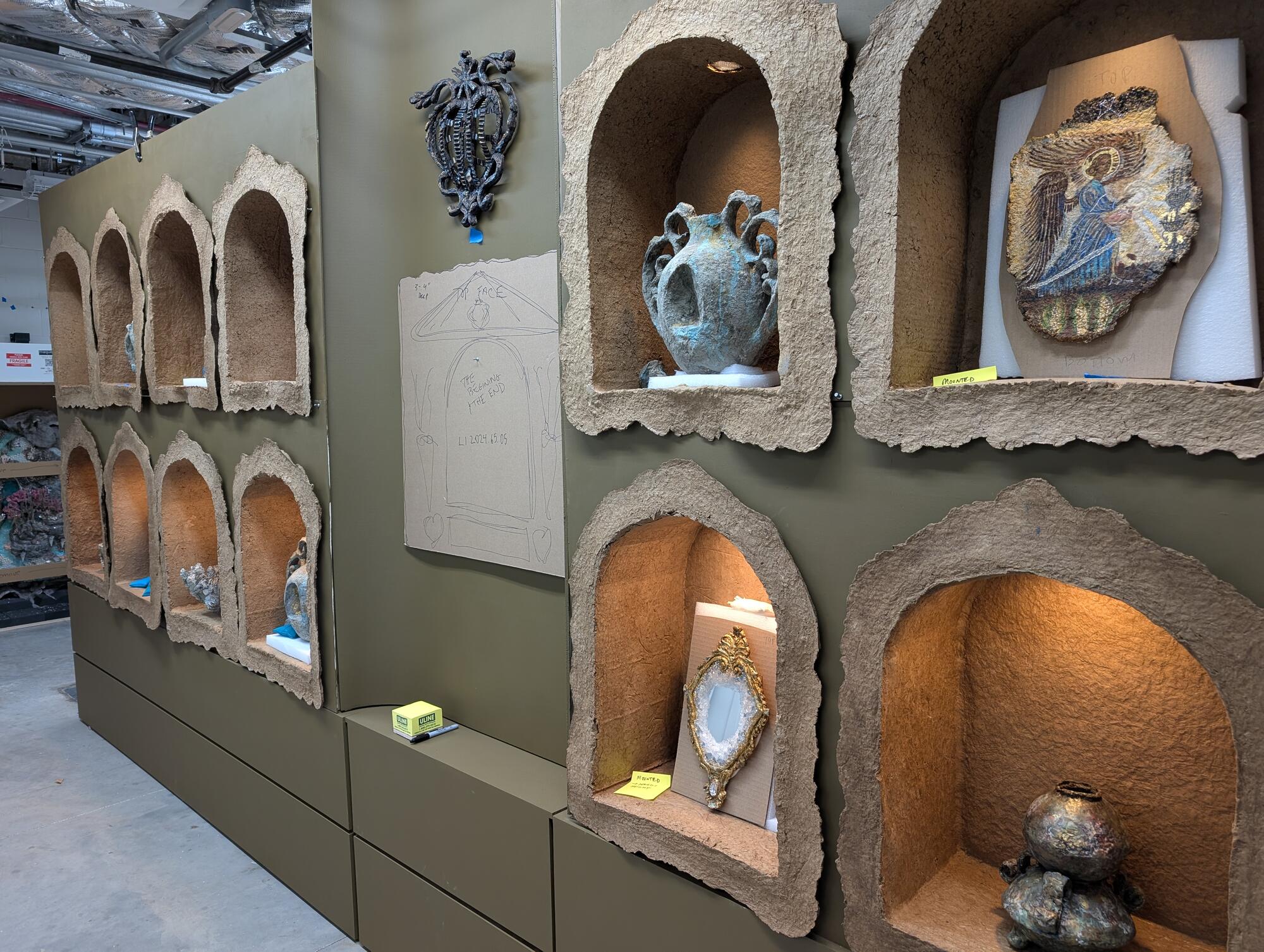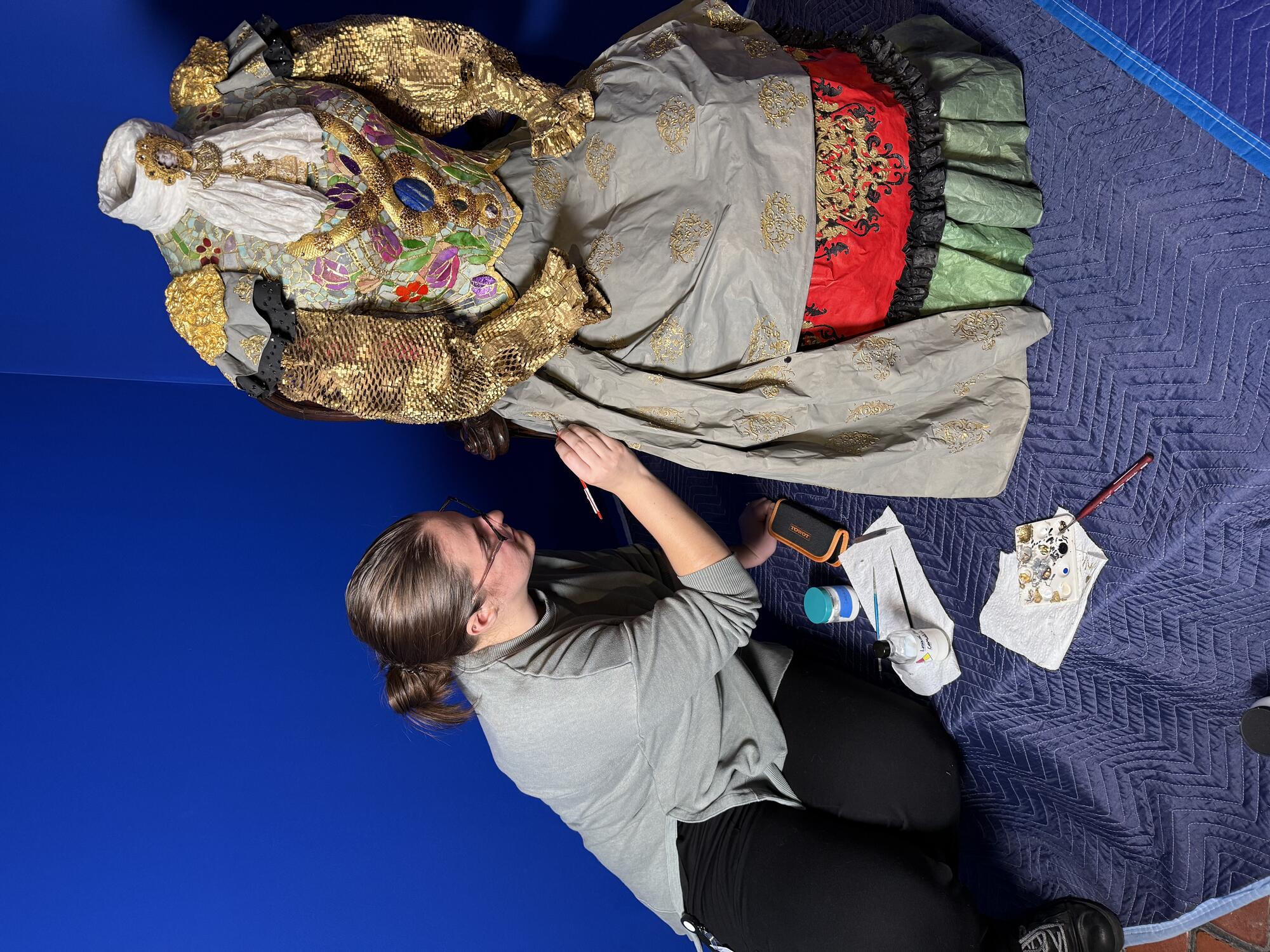Have you ever wondered how a museum exhibition comes together? The doors to our special exhibitions galleries close, and about five weeks later, a whole new experience is created—new artwork, new wall colors, new everything!
In fact, creating a show at the Isabella Stewart Gardner Museum requires years of forward planning and a team of collaborative staff members with diverse skill sets. Registrars—the people responsible for arranging art’s movement and installation—conservators, curators, preparators, exhibition designers, exhibition managers, and others follow a multi-year plan to execute the concepts you see in Hostetter Gallery and Fenway Gallery as visitors.
From my point of view as a conservator designated to help with exhibitions, I want to share some insights into the processes that facilitated our current exhibition Waters of the Abyss: An Intersection of Spirit and Freedom by Fabiola Jean-Louis, on view February 27 - May 25, 2025.
The Gardner Museum’s relationship with Fabiola Jean-Louis began with her tenure as an Artist-In-Residence in early 2022. Jean-Louis is a multidisciplinary artist who uses painting, photography, and sculptural paper techniques to explore rich themes centered on African American and Afro-Caribbean perspectives. She draws from her own background as a child from Port-au-Prince, Haiti. Her photography and innovative paper gowns were featured in the exhibition Fabiola Jean-Louis: Rewriting History (Fenway Gallery, October 19, 2023–January 15, 2024).
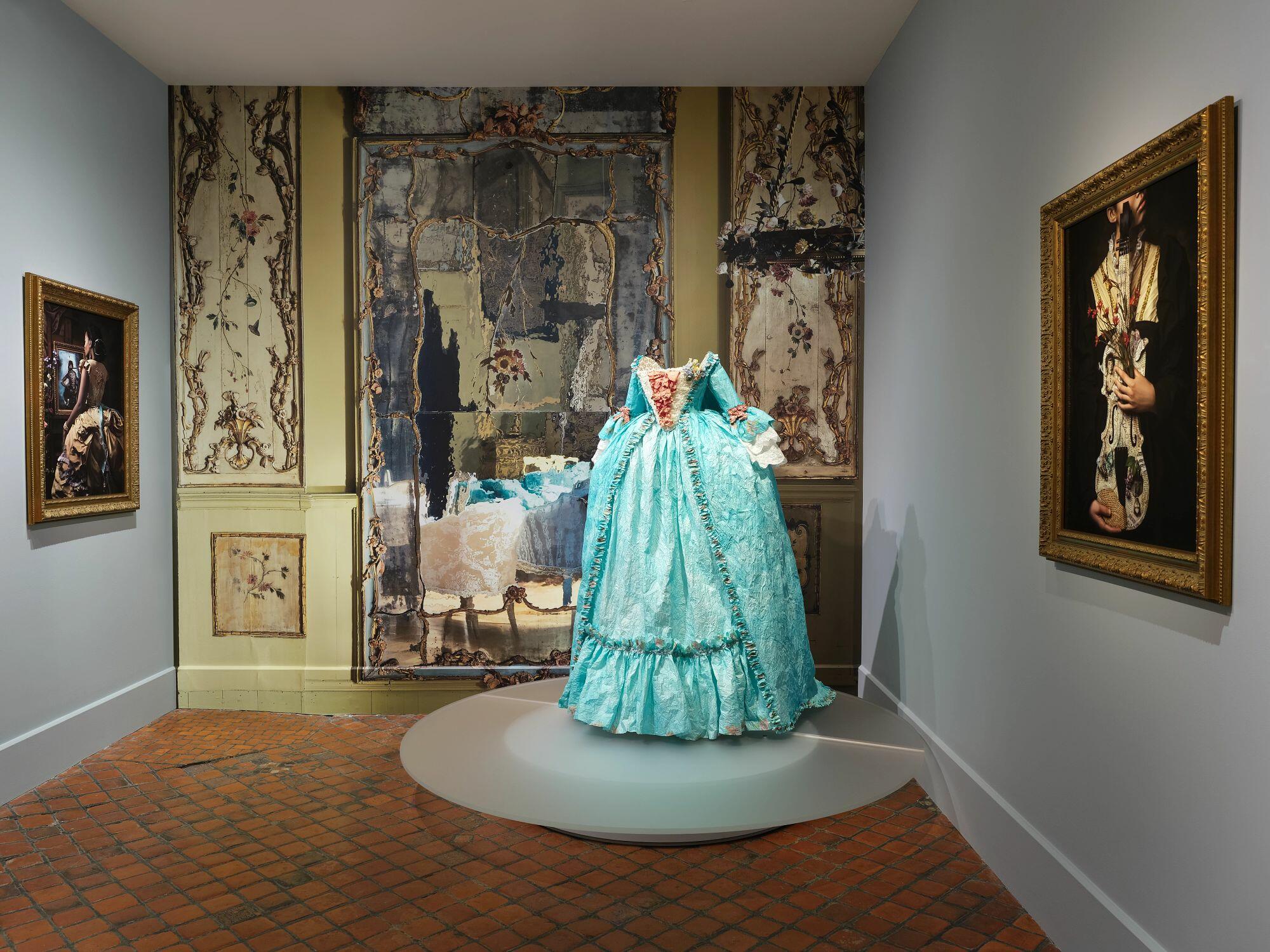
Isabella Stewart Gardner Museum, Boston
The exhibition Fabiola Jean-Louis: Rewriting History in the Fenway Gallery, 19 October 2023–15 January 2024
Transporting the Work
For Waters of the Abyss, Jean-Louis made a wide range of magnificent new works in her signature medium: sculpted paper pulp. The size and fragility of these pieces required exacting logistics to transport them from her studio in Brooklyn, New York to Boston. A small team of Gardner staff traveled to the artist’s studio to plan for the move. New artwork presents unique challenges, and we rely on experience and expertise to ensure the objects are properly handled, packed, and mounted. In this case, we helped design custom crates for each of the works in order to feel confident that they would arrive in Boston safely.
Condition Reports
Part of managing safe transit for objects is a process called “condition reporting.” Upon arrival at the Gardner, the team made a full assessment of each artwork’s condition after its move. Conservation staff wrote a summary report for each object accompanied by photos to help us track the object’s condition throughout the duration of the show. If any damage occurs, we want to be able to pinpoint exactly when and how it happened. During examination, we discovered that one object had begun to warp and buckle during transit. We needed to treat the issue.
Treatment
Two conservators worked alongside Jean-Louis to remove the distorted image layer, flatten it, and return it to the object. This was a sensitive process that called for time and careful planning.
Photography
Our staff photographer captured beautiful photographs of many objects in the show for the exhibition catalogue and promotional materials. Taking photographs of art objects requires artistry in itself. Objects must be photographed from specific angles and under specific lighting conditions to bring out relevant details in the images.
Mounting & Installation
As the show approaches, it is time to install artwork in the gallery. Objects in Water of the Abyss range from tiny crystal-lined vessels made of paper clay to life-sized gowns made entirely of paper and resin. Keeping them secure and properly supported is essential but can pose challenges. Our team used everything from tiny brass pins padded with plastic tubing to large metal armatures.
The mounted objects are then placed according to the exhibition designer’s schematic drawings–allowing for small changes requested by the artist or curator. Then, the big reveal happens on opening day! We hope you have the opportunity to see Waters of the Abyss and enjoy the wonderful artwork that we have had the privilege to work with in the many months leading up to the show.
You May Also Like
Read More on the Artist
Fabiola Jean-Louis

Read More on the Exhibition
Fabiola Jean-Louis: Rewriting History

Read More on the Blog
Marie Antoinette in the Gardner Museum
